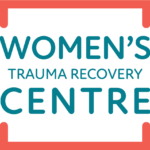
Image: Practice leader at Watts McCray Lawyers and chairwoman of the Illawarra Women’s Health Centre, Jessica Koot. Picture by Sylvia Liber
Isolation, surveillance, degradation: Coercive control laws now in effect
An Illawarra man left his partner feeling trapped, physically isolating her from her family and telling her he would “put her in a body bag” if she left.
He obsessively monitored her mobile phone after accusing her of cheating, asked her for lists of men she has previously slept with, called her demeaning slurs, and repeatedly inquired about where she was.
On one occasion, the man gave her a black eye when she denied cheating, and on another, bashed her when she suggested they split up.
He was jailed for the physical violence last October, but there was no law criminalising the isolation or humiliation.
This changes from Monday, July 1, as coercive control is now an offence.
Such patterns of abusive behaviour preceded 97 per cent of intimate partner domestic violence homicide cases, according to the NSW Domestic Violence Death Review Team.
The new laws widen the focus from specific incidents of violence or threats of violence, to patterns of abuse that aren’t necessarily physical, but leave people feeling trapped.
The offence contains six elements that need to be proven by the prosecution in court, including that an current or former intimate partner has repeatedly engaged in “abuse behaviour”.
Crucially, it must be proved the offender intended to coerce or control the other person.
A defence will be available where the conduct was “reasonable in all the circumstances”.
Challenges and shortfalls
Shellharbour MP Anna Watson, who first introduced a private members bill on coercive control in 2020, and Illawarra advocates welcome recognising coercive control as a crime, but expressed concerns about how it will be applied.
Executive director of the Illawarra Women’s Health Centre, Sally Stevenson, expressed disappointment about the the element of proving intent.
“We were really clear that having intent there is an impossibly high bar for a couple of reasons,” Ms Stevenson said.
“One is that it plays into the perpetrator’s modus operandi, because they’re really good at grooming the community around them – family, friends and colleagues.
“It’s one of the fundamental flaws of the legislation … we had such an opportunity to drive change in this incredibly difficult social problem and we’ve missed it.”
A review of the law in two years will consider whether the threshold of intent should be lowered to recklessness.
Practice leader at Watts McCray Lawyers and chairwoman of the Illawarra Women’s Health Centre, Jessica Koot, listed a challenge of the onus of proof being on victim survivors to collate evidence of the abusive behaviour.
“That can be really difficult when you’re in a relationship involving domestic, family and sexual violence, as the perpetrator may find the victims records and notes,” Ms Koot said.
“The government has brought in a new app called Empower You to assist victim survivors (record their evidence), but we need to be mindful victim survivors often don’t have a safe place to store the app.”
As the law comes into effect on Monday, Ms Koot explained courts will only be able to consider abuse that occurs from July onwards.
She said it will take time for evidence to accrue due to the offence requiring a “pattern of behaviour”.
“However, we understand the prosecutors may use prior behaviours to rely upon those as tendency evidence to support a case, but they can’t be the actual behaviours on which the charge is made,” Ms Koot said.
Lawmakers also settled on the relationship applying to adult intimate partners. Ms Watson and Ms Stevenson would like to see it expanded to include other relationships.
“I have concerns for Indigenous communities which should be treated being mindful of elders and customs. I also have concerns that CALD communities need a different approach,” Ms Watson said.
“Child to parent abuse is not there, abuse in a domestic setting like group homes for women with disabilities is not there,” Ms Stevenson said.
“A broader family abuse that happens in different cultural communities isn’t there.”



